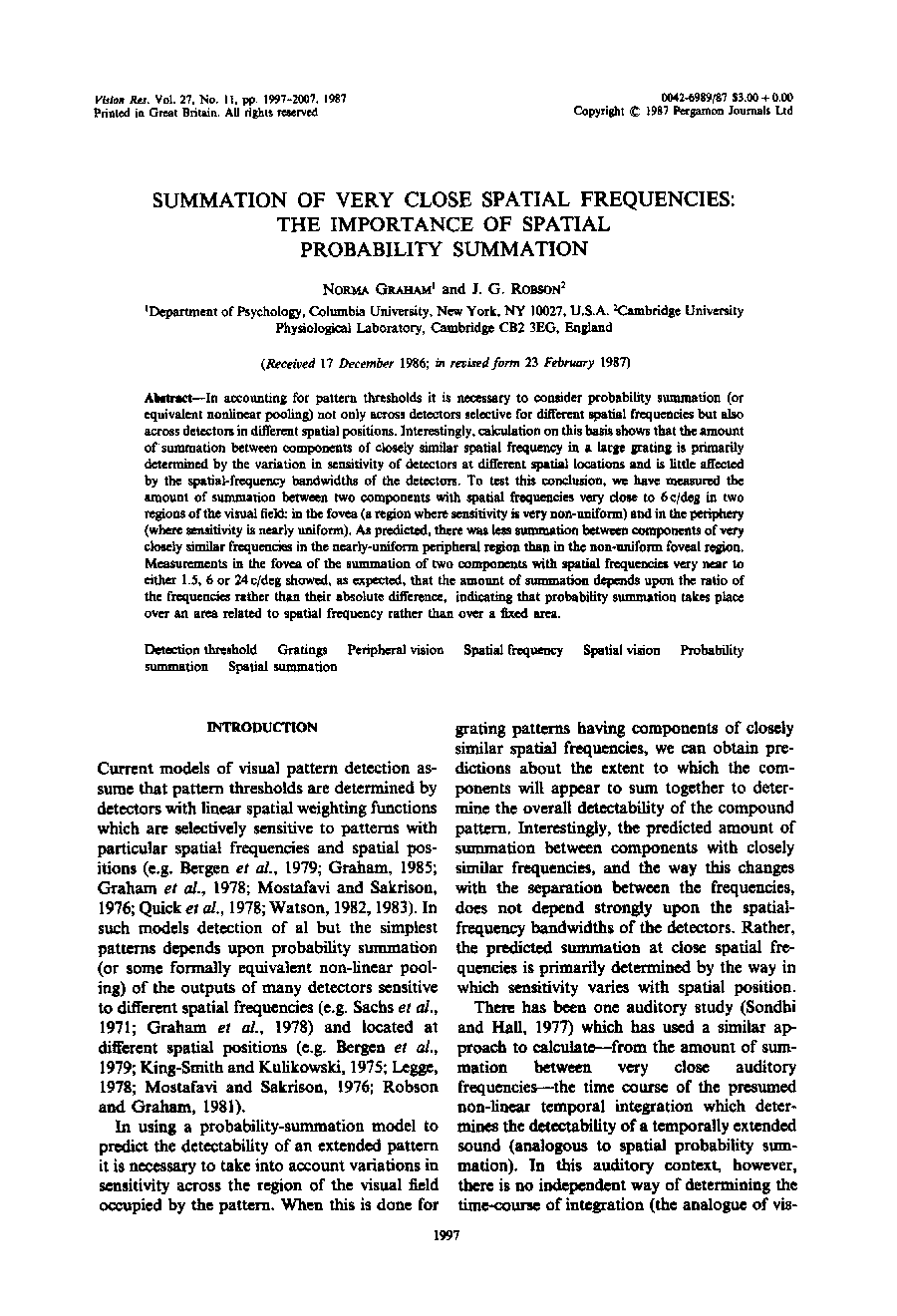| Article ID | Journal | Published Year | Pages | File Type |
|---|---|---|---|---|
| 4038858 | Vision Research | 2007 | 11 Pages |
In accounting for pattern thresholds it is necessary to consider probability summation (or equivalent nonlinear pooling) not only across detectors selective for different spatial frequencies but also across detectors in different spatial positions. Interestingly, calculation on this basis shows that the amount of summation between components of closely similar spatial frequency in a large grating is primarily determined by the variation in sensitivity of detectors at different spatial locations and is little affected by the spatial-frequency bandwidths of the detectors. To test this conclusion, we have measured the amount of summation between two components with spatial frequencies very close to 6 c/deg in two regions of the visual field: in the fovea (a region where sensitivity is very non-uniform) and in the periphery (where sensitivity is nearly uniform). As predicted, there was less summation between components of very closely similar frequencies in the nearly-uniform peripheral region than in the non-uniform foveal region. Measurements in the fovea of the summation of two components with spatial frequencies very near to either 1.5, 6 or 24 c/deg showed, as expected, that the amount of summation depends upon the ratio of the frequencies rather than their absolute difference, indicating that probability summation takes place over an area related to spatial frequency rather than over a fixed area.
